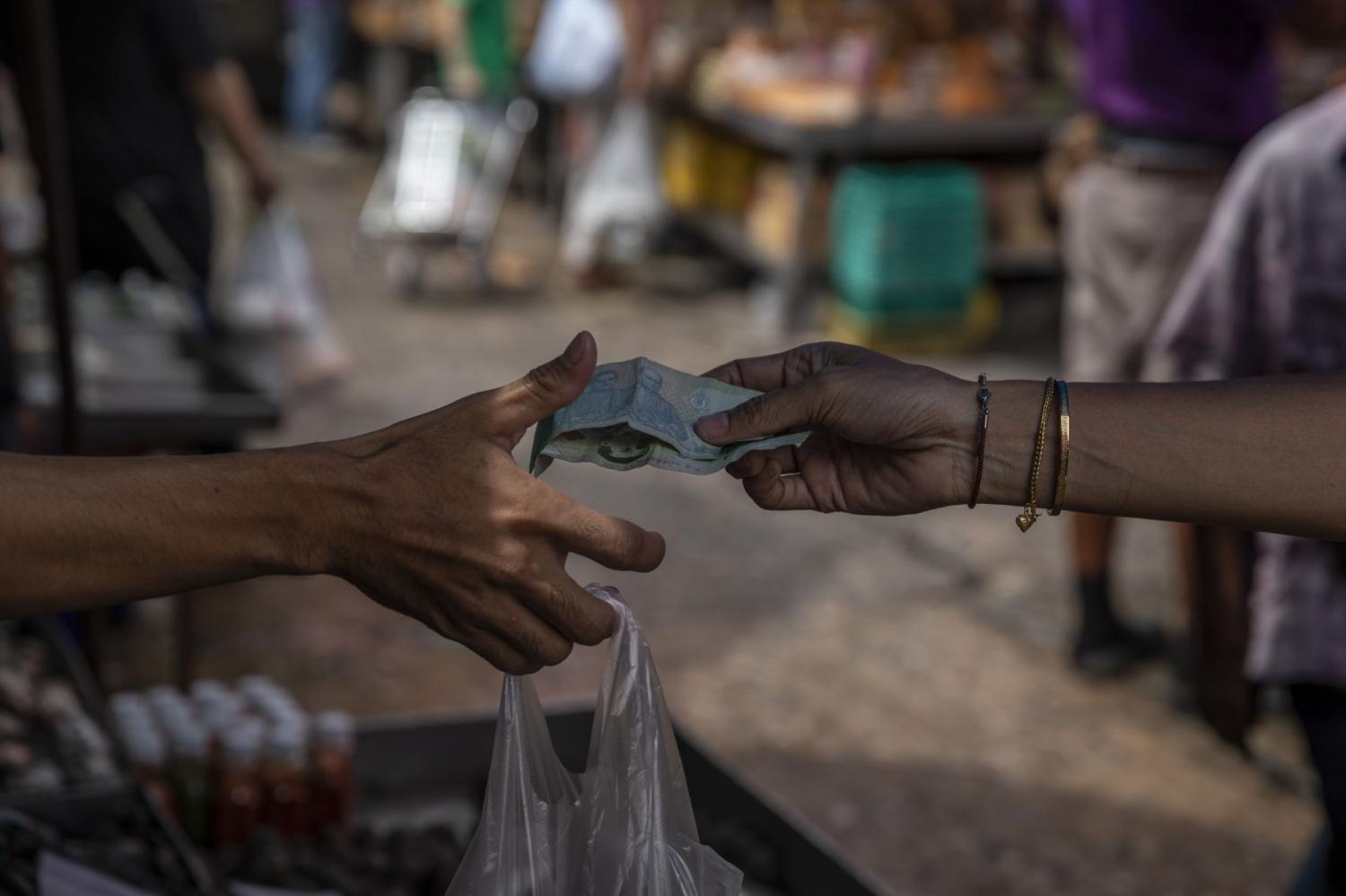
Why does the Thai economy risk facing an economic contraction in the second half of this year? The answer is simple.
Thailand does not have enough money to support positive economic growth. An economy is no different from a person. Before buying or investing in anything, one must come up with an appropriate level of cash or credit.
To achieve a 3.3% GDP growth target this year, consumers, businesses and the government need an additional 2.4 trillion baht of money supply to spend on consumption and investment until the end of the year.
That is quite a difficult task for the Bank of Thailand, the controller of the money supply, to manage.
In the first half of 2022, the Thai money supply (broad money) only increased by 0.48 trillion baht. Increasing domestic liquidity by five-fold in the second half of the year will be next to impossible.
The task will be even more difficult as liquidity continues to leave the economy due to capital outflow. In the first month of the second half of the year, another US$1.2 billion of capital left the country.
I do not think the outflow situation is improving given the fact that the baht is still on a depreciation trend. As of yesterday, the currency had fallen another 1.7% compared to a week ago.
However, my analysis could be wrong if the economy can perform a miracle of "growth without money" as it did in the second quarter of 2022.
The National Economic and Social Development Board (NESDB) just released second quarter GDP data, which showed GDP growth of 2.5%.
Many, such as the Bank of Thailand, were disappointed as they expected to see stronger growth as foreign tourists increased by over 300% compared to the first quarter, export income rose 9.7%, and private consumption indicators jumped by a whopping 9.8%.
Most economists believe the strength of the economy lies in tourism and export income.
The second quarter GDP data provides several interesting insights. First, foreign tourists are spending much less nowadays.
Prior to the Covid outbreak, the average foreign tourist spent about 50,000 baht per visit to the Land of Smiles. But in the second quarter of 2022, tourists spent just 31,735 baht each.
Is it shorter visits or a change in the tourist nationality mix or tourists being more financially prudent? I do not know. However, lower spending clearly indicates a change in tourist behaviour which will affect GDP.
Despite impressive export growth, Thailand registered a large trade deficit of US$6.3 billion in the second quarter owing to high oil import payments and high freight costs on imported products.
The trade deficit was $0.94 billion in the first quarter. In short, the international trade sector has become a point of concern and is hurting the Thai economy.
The miracle of the economy is personal consumption. It is logical to expect consumption would rise after Covid is no longer a threat. Indeed, personal consumption (in real terms) rose 6.9% in the second quarter.
This figure looks suspicious. Should people consume less because of reduced real purchasing power due to high inflation? Inflation rates were 4.65%, 7.1%, and 7.66% in April, May, and June respectively. Also, consumption rose much faster than income (GDP) which grew 2.5% in that quarter. So, where do Thai consumers get the money to spend?
Comparing the second quarter to the first in 2022, Thai consumers spent 189 billion baht more on consumption but earned 80 billion baht less in income. Adding the two together, Thais should be 269 billion baht short of money. We know that the government did not hand out cash in the second quarter and banks did not extend more credits owing to NPL risk and negative excess liquidity.
One plausible explanation, by those not familiar with the Thai economic structure, is drawing down on personal savings. According to Bank of Thailand data, as of June 2022, 87.7% of Thai savers have less than 50,000 baht in their accounts. Readers might be shocked to know that the average cash balance for each account holder is 4,251.5 baht.
This is entirely guesswork, but it is possible that consumers delayed their debt payments and spent cash on consumption.
Outstanding Thai household debt is about 14.6 trillion baht. If household debt has an average maturity of 100 months, Thai borrowers collectively have to repay 146 billion baht in principal payments per month.
Thai consumers did not spend money on necessities. According to the Bank of Thailand's Personal Consumption Indicators, spending on non-durable goods such as food and medicine only rose 2.1% while spending on services such as restaurants, bars and tourism rose 23.5% in the second quarter of this year. Assuming that the "miracle" does not repeat in the second half of this year, ie, loan defaults do become fashionable, Thai economic growth would be constrained by inadequate liquidity.
To spare readers complicated econometric calculations, appropriate GDP growth for the second half of this year, without taking undue financial risk like in 1997 into account, is a contraction of 1.0%-1.5%.
If the NESDB and Bank of Thailand want to push economic growth beyond the recommended level, they must find "money" for consumers to spend. Unfortunately, the only possible source is capital inflow. Stimulating domestic loan growth, which is another source of money supply creation, is too risky because household debt is already beyond a sustainable level while government debt is approaching its debt ceiling.
I have one serious concern about household debt. It is not high-level debt (90% of GDP) that bothers me, but the composition of the debt. In most countries, 50% to 70% of household debt would be housing loans which are long-term loans backed by solid collateral. But only 30% of Thai household debt comprises housing loans. The ability to pay back household debt is, therefore, much risker in Thailand.
Every economy in the world at a particular time has an appropriate level of growth. Trying to push the economy beyond its capacity would only mean a disaster like Thailand in 1997. This is my statement of the day.
Chartchai Parasuk, PhD, is a freelance economist.
